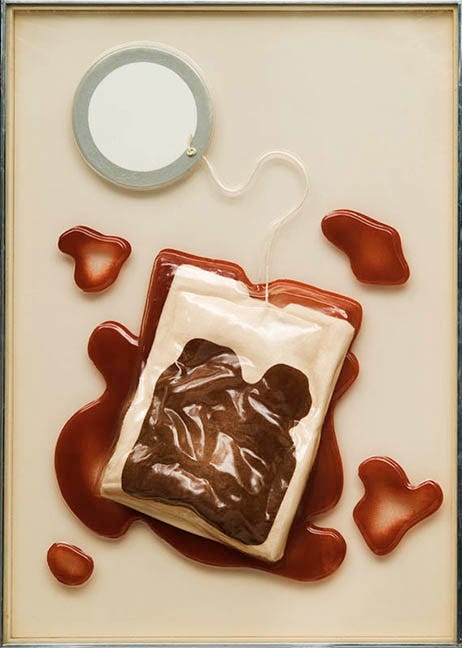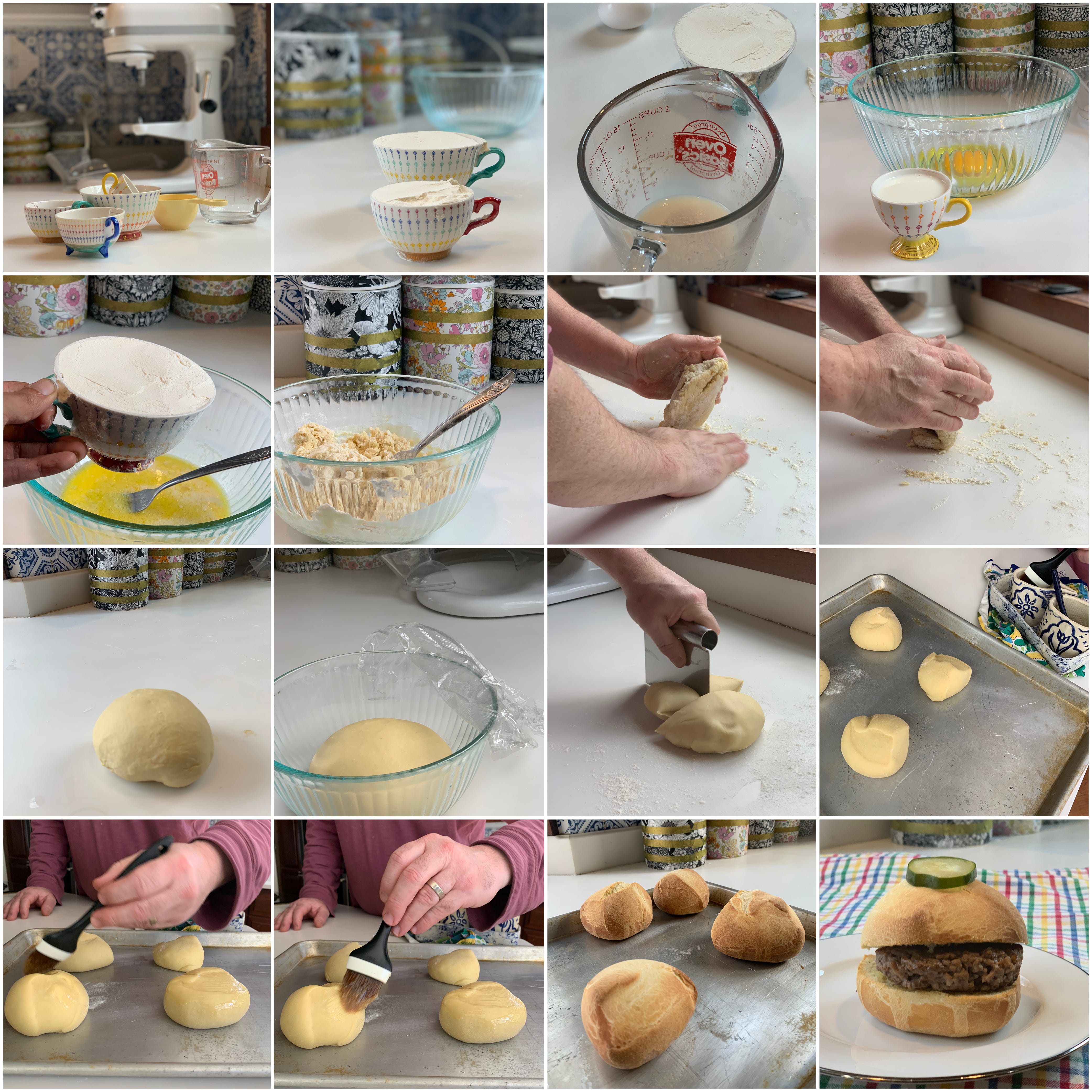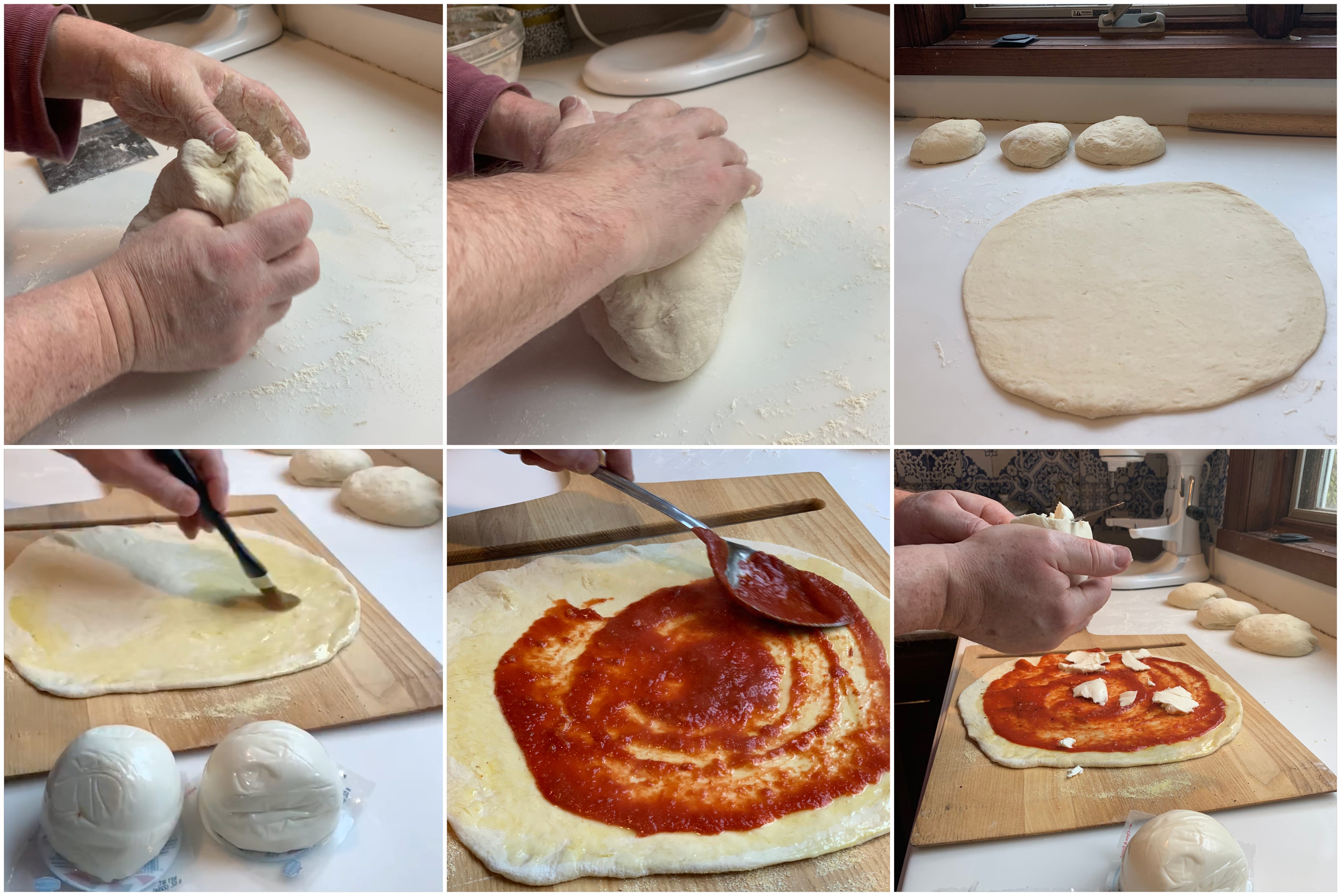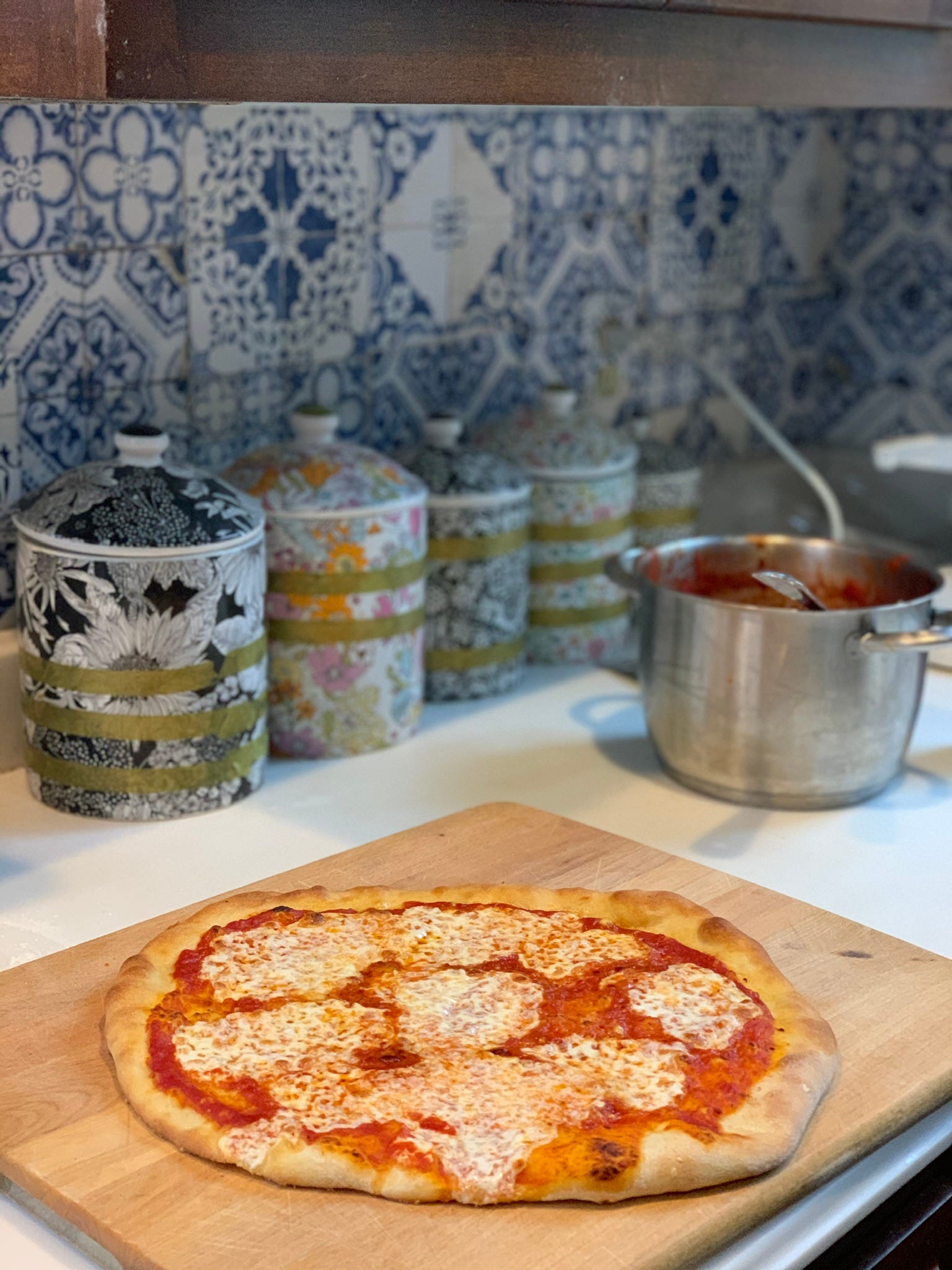This regular series uses the Akron Art Museum’s collection as a source for inspiration for meals to cook at home. Links to recipes at the end of the post.
Most visitors to the Akron Art Museum experience Claes Oldenburg’s work. He, with his wife Coosje van Bruggen, were the creators of Inverted Q, the large painted concrete sculpture occupying an honored position at the front door. While the keen observer might pick out the shape of the letter Q on first glance, this large form feels abstract, unlike much of Oldenburg’s oeuvre. His works often transformed everyday objects, playing with scale and texture.

In Tea Bag from 1967, Oldenburg a ubiquitous everyday item into a relief sculpture. Oldenburg notes often in interviews that his work was about transforming items, unlike Dada-artist Marcel Duchamp, for example, “I wasn’t copying; I was remaking them as my own.” This tea bag is increased in size five-fold, with the overall composition being 39 inches high. The greater transformation might be material. A dripping tea bag on a table, something liquid and easily wiped up, becomes vinyl, screenprint on plexiglass, with felt and rayon cord.
What does a work like this mean? Oldenburg is careful to warn viewers to avoid easy interpretation of his works, “This isn’t to say the work is inflected with nostalgia; rather, it reflects the fact that the object only serves as a starting point.” Oldenburg makes the object part of the gallery space in an unexpected manner. With the change in scale and media, the tea bag becomes immaterial, ceding to forms and colors. Yet, are the actual objects not part of the interpretation? Ohio-born artist and sometime Oldenburg collaborator suggested the artist “was looking at American consumer culture and finding New World romance.” Oldenburg was the child of a Swedish diplomat, who while born abroad, was largely raised in Chicago. He acknowledges the Midwestern city was formative in his transformation from immigrant to American.

While raised in the land of deep dish pizza, Oldenberg’s lithograph Flying Pizza shows a large, thin-crusted pie, in the style famous in New York, the city he now resides in. Most people might not imagine bread and tomato taking flight, but Oldenburg’s oeuvre is filled with such fanciful moments. The artist is noted for his skill as a draftsman, but he often notes imagination as his great talent. For him, the artist is meant to explore media and ideas in an effort at “defining what art is.” His imagination was essential in this exploration, but he also wanted these works to be grounded in human life. As he noted, “my art is made for human beings, and it’s important that people enjoy the experience of seeing it.” Everyday objects, like pizza, therefore afford people relevancy and surprise at once. These common objects have an anti-elite quality combined with a host of personal experiences viewers can draw on. Who hasn’t eaten pizza? Yet, who has seen a building-sized pizza fly?
Food, therefore, is a potent tool for Oldenburg. Food has a fluidity and ephemerality that appeals to him. He elucidates, “I like food because you can change it. I mean, there is no such thing as a perfect lamb chop; you can make all types of lamb chops. And that’s true of everything. And people eat it and it changes and disappears.”
Some of Oldenburg’s best known sculptures, like Floor Burger, like the one in the Museum of Modern Art or Dropped Cone, Neumarkt Galerie, Cologne, are commentaries on consumerism, they’re much more about formal concerns. In many ways the content, the meaning of a pizza or a burger don’t matter. As he said, “I always say I’m not doing a hamburger, I’m doing a sculpture.” The plasticity of food, for example, had a great appeal. Food, in its way, is like a sculpture, with its own properties of viscosity, texture, and form. Oldenburg’s efforts at turning food into art brings something common into the viewer’s consciousness.
When Tea Bag was donated to the Akron Art Museum by Case Western Reserve University Art History professor, Harvey Buchanan, he suggested it was “sufficiently ambiguous . . . to be challenging.” Food in Oldenburg’s work embodies many juxtapositions: common and surprising; delicious and inedible; accessible and inscrutable. The overall works are relevant and yet encourage deeper thought. What makes a burger a sandwich and not a sculpture? Why create a fine artwork of a used tea bag? What does it say about our world when we only look at commodities we consume?
The Food:
Oldenburg’s works often show American classics like burgers and pizza. While these are foods most of us usually enjoy at restaurants, in social isolation, you might try your hand at making these old standards at home.

Burger buns are easy to make. The dough can be made without a stand mixer, just make sure to knead well. If you find yourself needing to ration flour and yeast, make just enough buns as people. The recipe is easily halved or doubled.
Oldenburg’s most famous burger is a slim patty with a pickle. But, other sculptures include a fully loaded burger with lettuce, tomato, and mayo. Whatever toppings you have available work great.


Pizza is another Oldenburg-inspired food that’s easy to make. Flying Pizza is a thin-crust pie, made with another simple dough recipe. The key to making a perfect pie is rolling the dough out very carefully so it doesn’t tear. Oldenburg’s pizza solely features cheese, but you can take inspiration from his idea that there is no single ideal for food adding your own toppings.
You might end the meal with ice cream — though don’t feel you need to drop it.
Recipes:
Cooking with the Collection is made possible with support from the Henry V. and Frances W. Christenson Foundation and the Samuel Reese Willis Foundation.

